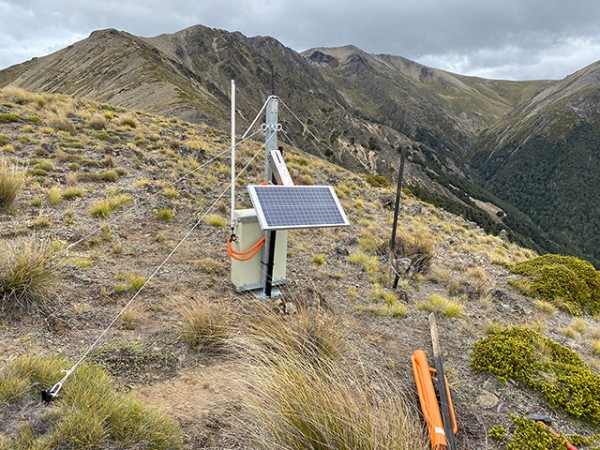Molesworth — the site for new possum-trapping devices
We're advancing possum surveillance and control at Molesworth Station by trialling new ‘state of the art’ trapping devices.
AT220 traps have been modified by ASG Technologies to enable remote data on wildlife activity. This is possible using a LoRa gateway satellite device which monitors possums with artificial intelligence (AI) cameras.
 Our Upper South Island Field Services Manager, Josh King says the technology is an exciting development for possum control and surveillance in remote areas like Molesworth. 'While it is gnarly country, vast, with challenging climate extremes, these remotely monitored traps may enable us to support traditionally labour-intensive and costly methods.
Our Upper South Island Field Services Manager, Josh King says the technology is an exciting development for possum control and surveillance in remote areas like Molesworth. 'While it is gnarly country, vast, with challenging climate extremes, these remotely monitored traps may enable us to support traditionally labour-intensive and costly methods.
'We worked closely with ASG on mapping out where we could set up the remote gateway devices. This involved erecting antennas and solar panels on exposed ridges. They were secured with heavy gear to withstand extreme gales and heavy snow.'
How the traps work
Set up on the valley floor, the traps are battery driven and fitted with an infra-red sensor. AI software records a possum encounter and sends a signal back. The traps have a jaw mechanism and reset themselves, potentially up to 100 times.
The new traps are deployed over a small area but will inform us about whether it is possible to monitor for possums and acquire data via satellite from extremely remote areas.
'It’s trial by error. This is phase 1 and we’re actively looking at other methods to support our pest control at Molesworth. The traps could also help us evaluate the success of post-aerial operations.'
Eradicating TB at Molesworth
At OSPRI we're adopting a multi-pronged approach to eradicating TB in wildlife at Molesworth. There is an aerial operation planned over 80,000 hectares at Tarndale and Bush Gully this winter. This follows another 60,000 hectares that was aerially controlled in 2017.
'There are great opportunities to introduce drone technology along with thermal imaging cameras in areas such as Molesworth. Ideally this would enhance our possum control surveillance capability and be invaluable to our nationwide TB eradication programme.
'We are dealing with the tail of the infection and investing in multiple methods to achieve TB freedom. This is the final stage of a long journey to return Molesworth and the herd there to a TBfree status and, the technology is one component in achieving that,' says Josh.
Molesworth station covers almost half a million acres (185,000 hectares) and is home to the largest cattle herd in the country. In terms of bovine tuberculosis (TB), the herd at Molesworth has the longest standing infection dating back to the 1960s, when it was first detected.

